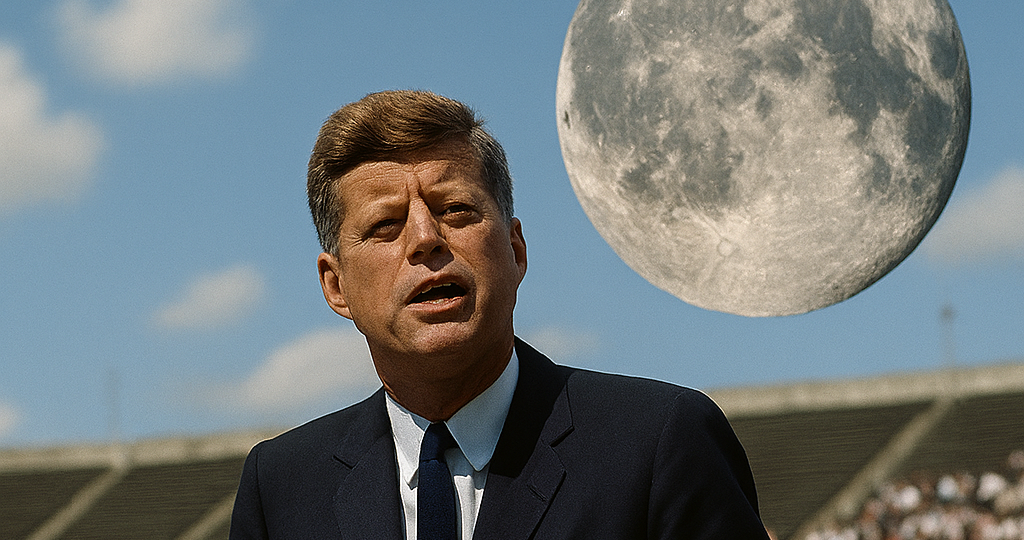
After Yuri Gagarin’s orbit, America needed to respond—and fast. The answer came with the Mercury Program. On May 5, 1961, Alan Shepard launched aboard Freedom 7, becoming the first American in space with a short suborbital flight. Less than a year later, John Glenn made history with Friendship 7, completing three orbits around Earth and proving that the U.S. was catching up to Soviet achievements.
That same month, President John F. Kennedy raised the stakes even higher. On May 25, 1961, he declared before Congress that the U.S. would land a man on the Moon before the decade’s end. It was a daring challenge that instantly shifted the Space Race from near-Earth victories to humanity’s greatest frontier.
The Soviets, however, weren’t slowing down. In 1963, Valentina Tereshkova became the first woman in space aboard Vostok 6. Then came Voskhod 1, the first spacecraft to carry more than one cosmonaut, and in 1965 Alexei Leonov performed the first-ever spacewalk, floating in open space and shocking the world with a feat that seemed almost impossible.
Meanwhile, the U.S. pushed forward with Project Gemini, a bridge program that tested the skills and technology needed for the Moon. Docking maneuvers, spacewalks, and long-duration missions proved that Kennedy’s vision was within reach. The race was no longer just about who reached space—it was about who would conquer it.
For anyone who wants the actual quote, here it is, “I believe that this nation should commit itself to achieving the goal, before this decade is out, of landing a man on the Moon and returning him safely to the Earth. No single space project…will be more exciting, or more impressive to mankind, or more important…and none will be so difficult or expensive to accomplish….”
RELATED POSTS
View all


